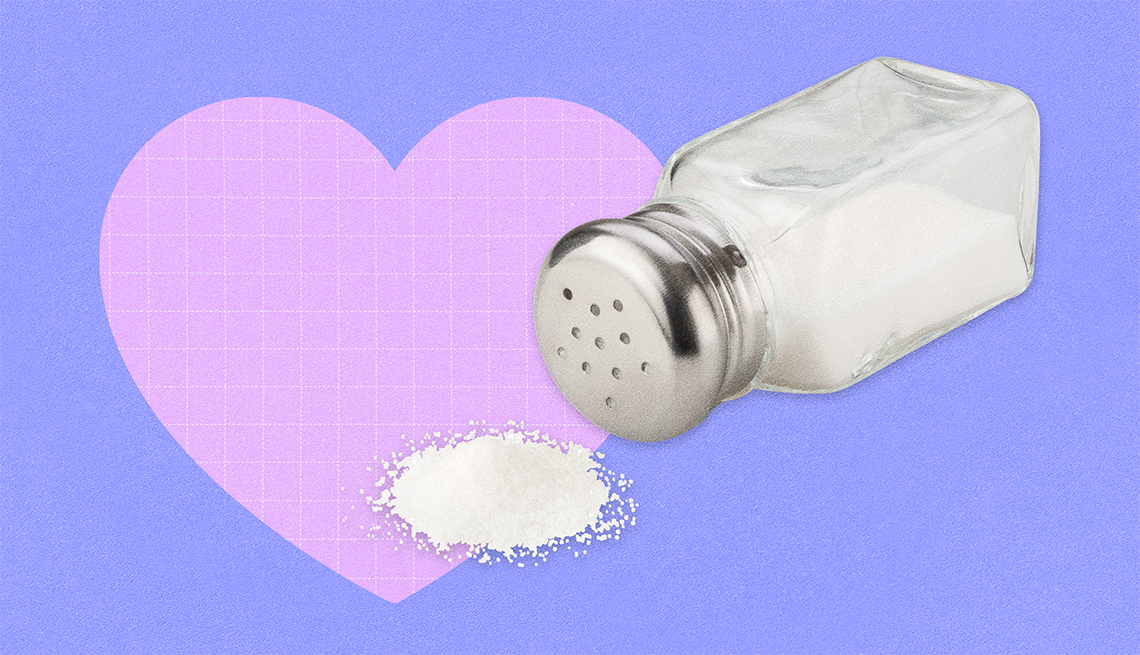AARP Hearing Center


Before you sit down to your next meal and ask someone to pass the salt, consider this: A few shakes can have a significant impact on your blood pressure.
New research finds that most older adults who cut about a teaspoon of salt from their daily diet — the equivalent of 2,300 milligrams (mg) of sodium — over the course of one week lowered their systolic blood pressure (the top number) by about 6 mm Hg, which is roughly the reduction many people see when they take a common medication for high blood pressure. The effect was even seen on people already taking blood-pressure-lowering drugs.
The results indicate that lowering your blood pressure in a week can be done, says Deepak Gupta, M.D., lead author on the study, published in JAMA, and an assistant professor of medicine in the Division of Cardiovascular Medicine at Vanderbilt University Medical Center. “And even small reductions — any reduction from the usual amount — can be beneficial.”
‘Salt is everywhere’
10 sneaky sources of sodium
It’s not just the salt-dusted chips you need to watch. These are the top 10 sources of sodium in our diets, according to the Centers for Disease Control and Prevention:
- Breads and rolls
- Pizza
- Sandwiches
- Cold cuts and cured meats
- Soups
- Burritos and tacos
- Savory snacks (chips, popcorn, pretzels, etc.)
- Chicken
- Cheese
- Eggs and omelets
Sodium’s role in blood pressure fluctuations is not a new revelation, says Maya Vadiveloo, an associate professor of nutrition at the University of Rhode Island. Many people who have high blood pressure can tell you that cutting back on salt — and stress and sitting and smoking — is recommended to bring those numbers down. But this latest research “is a real addition” to our understanding, and it “adds fuel to discussions” on the amount of sodium in our food, Vadiveloo says.
Most Americans consume more than 3,400 mg of sodium per day, well over the recommended upper limit of 2,300 mg per day and the ideal amount of 1,500 mg per day, according to the American Heart Association (AHA). In fact, in this latest JAMA study, researchers found that most individuals were eating around 4,500 mg per day. Gupta says the vast majority of the sodium we consume is from packaged and prepared foods.






























































More From AARP
What to Know Before Logging Into the Patient Portal
Know the pros and beware the pitfalls7 Sneaky Sources of Sodium (and What to Eat Instead)
High levels of salt may be hiding in food that seems healthy4 Questions to Ask Your Doctor About Your Heart
Knowledge is power when it comes to lowering your risk for the nation’s no. 1 killer
Recommended for You